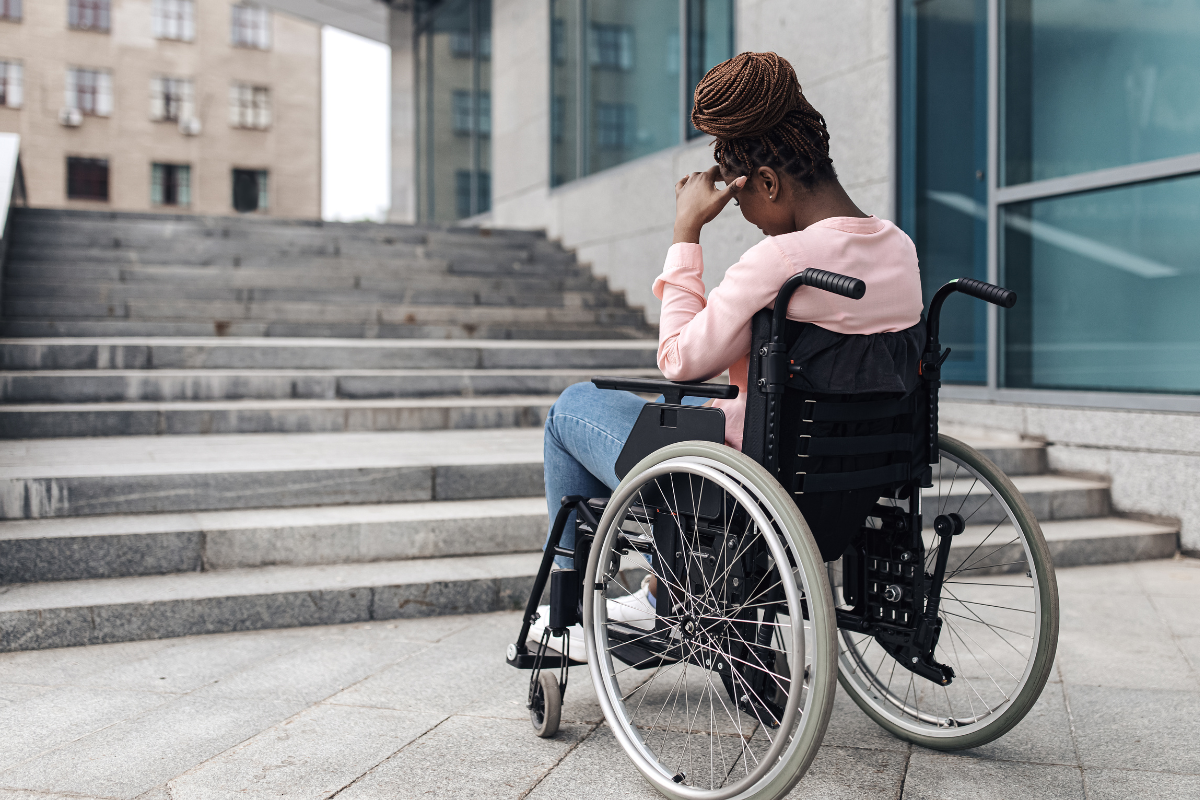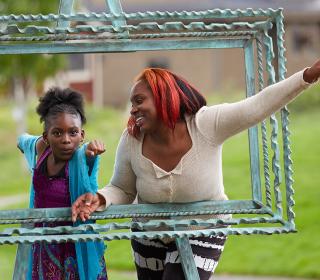For as many social identities that exist, there are unfortunately just as many discriminatory practices against each one. From racism, to ageism, to microaggressions, and beyond, every identity experiences some level of prejudice against them.
Ableism is discrimination and prejudice against people with disabilities. This discrimination can stem from a variety of sources – a belief that people with disabilities are “inferior,” a belief that disabled people require “fixing,” a belief that disabled people are defined by their disability, and more. Like other “isms” such as racism or sexism, ableism defines entire groups of people as “less than” based on stereotypes and personal biases.
Types of Ableism
Because there are many types of disabilities, ableism can manifest in many different forms, and it exists in all parts of our society. However, there are two main ways to classify these manifestations:
- Physical ableism is discrimination and prejudice against people with physical disabilities. Examples: failing to incorporate accessibility into building designs, such as ramps or elevators, or failing to include bathroom facilities that are easy to access and large enough for wheelchairs.
- Mental ableism is prejudice and discrimination against people who are mentally ill, neurodivergent, or labeled as having developmental disabilities. Examples: paying neurodivergent workers below minimum wage or isolating neurodivergent students.
Where Ableism happens

Internalized ableism is when a person consciously or subconsciously believes the biased, negative, and harmful comments they hear from other people. Our society praises productivity and habitually fails to understand or accommodate disabled individuals and their unique needs and experiences, and as a result, internalized ableism takes form. Examples include:
- Imposter syndrome - sometimes, disabled individuals feel as though they aren’t “disabled enough” to justify the help they receive, or to ask for help.
- Similarly, because of the stigma around mental illness, people who are mentally ill sometimes feel like they’re faking their condition.
- Reluctance to ask for help out of fear of being seen as a burden, despite the fact that many aspects of our society aren’t built with accommodations for disabilities in mind.
- A chronic sense of shame as a result of being victimized, humiliated, or traumatized by others' responses to their disability.
- Hiding one's condition or disability out of fear of being seen as less-capable than others and treated differently because of it.

Interpersonal ableism occurs when a person’s conscious or subconscious bias influences their perceptions of and interactions with other people. This can manifest in many different ways – from microaggressions, to slurs, to physical violence. Other examples include:
- Telling someone “You don’t look disabled,” which undermines a person’s experience with their disability and the hardships they experience.
- Asking someone “Can I pray for you?” unprompted. Not only does this make a lot of assumptions about a person’s disability and their spirituality, but it also implies that they’re “broken” and need to be “fixed.”
- Assumptions that disabled individuals are faking it or that they are lazy and don’t try hard enough, which implies that disabilities can be solved by simply “pulling up one’s bootstraps.”
- Forcing “kindness” – not everyone who is disabled wants or needs help, and making assumptions about a disabled individual’s needs can result in humiliation and even trauma.
- Using people with disabilities as “inspiration porn” – in other words, objectifying disabled people for the benefit of non-disabled people in order to inspire or motivate them.
- People with disabilities (particularly children) being more likely to experience abuse, which is often less-likely to be reported for fear that they won't be believed.
- People refusing to get vaccinated under the assumption they'll be ok, disregarding the fact that they can still infect immunocompromised individuals.

Institutional ableism refers to the implicit or explicit rules and regulations within an organization that discriminate against people with disabilities. Such organizations include: education, healthcare, government, businesses, and more. Here are some examples of how ableism manifests in specific institutions:
- Separating students with disabilities or labeled as having developmental disabilities into "Special Ed" programs rather than teaching them alongside their peers.
- Many buildings, cities, and roads aren’t designed or updated with disabled people and the accommodations they need in mind. Although the ADA (Americans with Disabilities Act) has standards for accessible designs, enforcement is inconsistent and dependent on advocates to push for change.
- Paying disabled workers less than able-bodied workers. In 37 states, employers can legally pay certain employees less than $7.25 an hour. These rates are determined by a workers' output compared to their non-disabled counterparts.
- During the peak of the pandemic, hospitals and governments created “Healthcare rationing plans” which outlined which patients would be prioritized for care and which would not in the event of a medical equipment shortage. In Washington, many patients considered “not a priority” were elderly, had pre-existing conditions, or had disabilities.
- People with disabilities routinely and historically receiving abuse, mistreatment, and discrimination in healthcare, including denial of health care and health care access based on assumptions, involuntary sterilization, forced institutionalization, and more. Disabled BIPOC patients in particular face discrimination, inequity, and mistreatment.
What to do
Don’t be scared to talk about disabilities! If we want to destigmatize topics like mental health, we have to be comfortable talking about it. To talk about it, we need to be willing to listen and learn. Here are some resources and more information about different disability organizations in Washington, and the kinds of disability support offered in our state.
Save the date for our 2024 Stand Against Racism Townhall on April 26, and learn more about speaker lineup and registration by signing up for YWCA's monthly newsletter.
Ana Rodriguez-Knutsen is the Content Specialist for YWCA's Marketing & Editorial team. From fiction writing to advocacy, Ana works with an intersectional mindset to uplift and amplify the voices of underrepresented communities.
We share the stories of our program participants, programs, and staff, as well as news about the agency and what’s happening in our King and Snohomish community.


